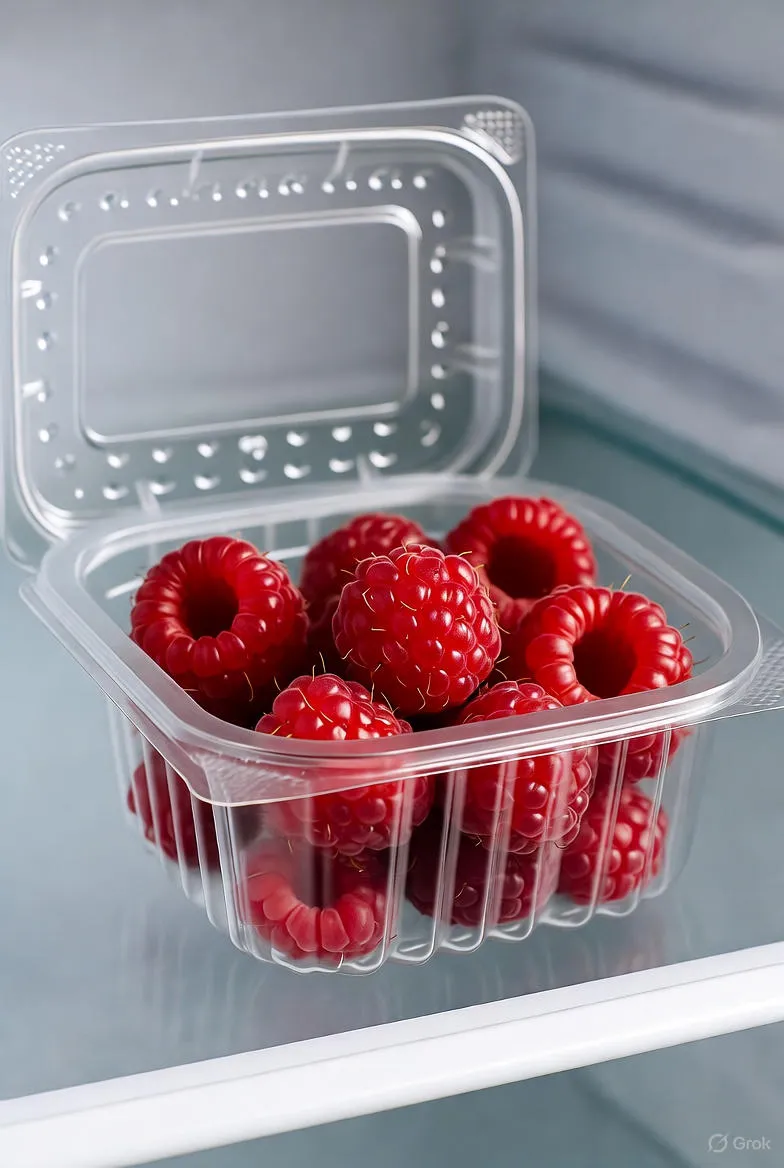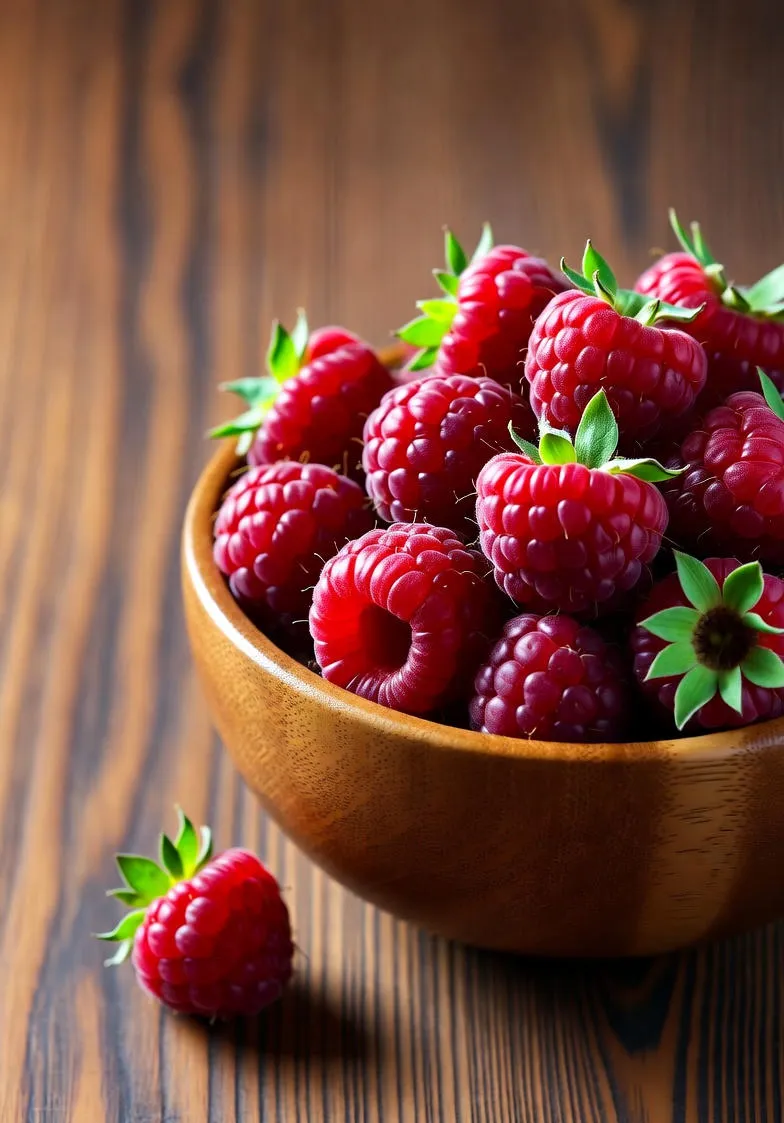Ultimate Guide: How to Store Fresh Raspberries for Maximum Freshness
Discover expert tips on how to store fresh raspberries to keep them juicy and flavorful for days. From fridge hacks to freezing techniques, extend shelf life and reduce waste effortlessly.

Introduction to Storing Fresh Raspberries
Raspberries are a delightful summer treat, bursting with sweet-tart flavor and vibrant color. However, their delicate nature makes them prone to spoilage, turning a bountiful harvest or farmers' market haul into mushy disappointment overnight. Proper storage isn't just about extending shelf life; it's about preserving that juicy texture and intense berry essence that makes raspberries irresistible in salads, desserts, or simply enjoyed by the handful.
In this comprehensive guide, we'll explore everything you need to know about storing fresh raspberries—from immediate post-purchase care to long-term freezing techniques. Whether you're a home gardener with overflowing bushes or a grocery shopper seeking value, these tips will help you minimize waste and maximize enjoyment. We'll cover fridge storage, room temperature options, freezing methods, and troubleshooting common issues, all backed by expert advice from food scientists and seasoned chefs.
Why Proper Storage Matters for Raspberries
Raspberries are what food experts call "soft fruits," with thin skins and high water content—about 85%—that make them highly perishable. Unlike sturdier berries like strawberries, raspberries don't ripen after picking, so their quality peaks within hours of harvest. Improper storage can lead to mold growth, texture breakdown, or flavor loss due to ethylene gas exposure from nearby produce.
According to the USDA, fresh raspberries last only 2-3 days at room temperature, but with the right techniques, you can extend that to a week in the fridge or months in the freezer. This not only saves money—raspberries can cost $4-6 per pint—but also reduces food waste, a pressing environmental concern. By storing them correctly, you're investing in nutrient retention too; these tiny gems pack vitamin C, fiber, and antioxidants that combat inflammation and support heart health.
Selecting the Best Raspberries for Storage
Before diving into storage, start with quality selection. Look for plump, firm berries that are uniform in color—deep red without green tips or white patches. Avoid containers with crushed or leaking fruit, as damaged berries release enzymes that speed up spoilage for the whole batch. Gently shake the punnet; berries should move freely, not stick together, which signals excess moisture.
If buying from a store, check the bottom of the package for juice stains—a red flag for overripeness. Opt for local or organic when possible; they often travel shorter distances, arriving fresher. For homegrown raspberries, harvest in the cool morning, placing them directly into shallow trays to prevent stacking and bruising.
Short-Term Storage: Keeping Raspberries Fresh in the Fridge
The refrigerator is your best friend for short-term raspberry storage, maintaining a cool 32-40°F (0-4°C) to slow bacterial growth and moisture loss. However, humidity is key—too dry, and berries shrivel; too damp, and mold thrives. Aim for the crisper drawer with high humidity settings.
Step-by-Step Fridge Storage Guide
- Prep Immediately: Upon bringing raspberries home, resist the urge to rinse. Water accelerates decay. Instead, remove any moldy or squished berries to protect the rest.
- Choose the Right Container: Ditch the original plastic punnet if it's crowded. Line a shallow glass or ceramic dish with a single layer of paper towels to absorb excess moisture. Arrange berries in a single layer—no stacking—to promote air circulation.
- Seal Loosely: Cover with plastic wrap or a lid, but leave a small vent for airflow. Alternatively, use a berry-specific colander insert for built-in drainage.
- Monitor Daily: Check every 24 hours, discarding any that soften. Consume within 3-5 days for peak flavor.
For an extra freshness boost, some swear by the vinegar soak method: dilute 1 part white vinegar with 3 parts water, gently swish berries for 30 seconds, then air-dry on towels before storing. This kills surface mold spores without altering taste.
Humidity and Temperature Tips
Set your fridge to consistent temps; fluctuations from door openings hasten spoilage. If your crisper lacks humidity control, place a damp cloth nearby but not touching the berries. Pro tip: Store away from ethylene producers like apples or bananas to prevent premature ripening.
Room Temperature Storage: When and How
Not all raspberries need chilling right away. If you'll devour them within a day, counter storage at 60-70°F (15-21°C) in a cool, shaded spot works fine. Spread them on a plate lined with parchment paper, uncovered, to let them "breathe." This preserves their just-picked aroma better than cold shock.
Ideal for warm-weather snacking or quick recipes, but watch for wilting in humid climates. Never leave them in direct sunlight or near heat sources like stoves—heat amplifies enzyme activity, turning firm fruit floppy fast.
Long-Term Storage: Freezing Raspberries Like a Pro
When raspberries are in season and abundant, freezing captures summer in every cube. Properly frozen, they retain 90% of fresh texture and flavor, perfect for smoothies, jams, or pies year-round. The key is flash-freezing to prevent clumping.
Preparation for Freezing
- Wash Gently: Rinse under cool, low-pressure water in a colander. Pat dry thoroughly with paper towels—lingering moisture forms ice crystals that mush berries upon thawing.
- Sort and Hull: Remove stems if attached, but raspberries rarely need hulling. Discard imperfect ones.
Freezing Techniques
Flash-Freezing Method: Spread clean, dry berries in a single layer on a parchment-lined baking sheet. Freeze for 2-4 hours until solid, then transfer to airtight freezer bags or containers. Label with date; they'll last 10-12 months at 0°F (-18°C).
Sugar Pack Option: For baked goods, toss with ½ cup sugar per quart before freezing. The syrup forms naturally, easing thawing. Unsweetened is best for versatility.
Whole vs. Crushed: Keep whole for aesthetics in desserts; crush lightly for sauces. Avoid refreezing thawed berries to prevent sogginess.
Thawing Best Practices
Defrost in the fridge overnight for even results, or use the cold water method: submerge sealed bags in icy water for 30 minutes. Never microwave— it cooks the fruit. Post-thaw, berries soften, so reserve for cooking rather than fresh eating.
Creative Ways to Use Stored Raspberries
Stored raspberries shine in myriad dishes. In the fridge? Toss into yogurt parfaits or green salads for a pop of color and tang. Frozen ones blend seamlessly into acai bowls, sorbets, or cocktail infusions—muddle thawed berries for raspberry gin fizz.
Experiment with raspberry chia pudding: layer overnight oats with frozen-thawed berries and a chia soak. Or bake raspberry thumbprint cookies, where the fruit's pectin thickens naturally. For savory twists, swirl into vinaigrettes or top grilled cheeses with a berry compote.
Don't overlook preservation beyond freezing: quick-pickled raspberries in vinegar add zing to charcuterie boards, lasting weeks in the fridge. Dehydrated berries make chewy snacks—use a food dehydrator at 135°F for 6-8 hours.
Common Mistakes to Avoid When Storing Raspberries
Even pros slip up. Washing before storage introduces moisture that fosters bacteria. Overcrowding crushes berries, releasing juices that drown the batch. Forgetting to vent containers traps ethylene, accelerating decay.
Another pitfall: temperature swings. Don't store near the fridge door, where warm air infiltrates. And post-freeze, avoid room-temp thawing, which invites microbial growth. Always prioritize FIFO (first in, first out) to use oldest stock first.
Troubleshooting Storage Problems
Fuzzy white mold? Isolate and toss affected berries; it's Botrytis, common in damp conditions. Wrinkled skins signal dehydration—mist lightly with water next time. If flavors dull, it might be ethylene cross-contamination; segregate fruits henceforth.
For freezer burn—dry, discolored patches—use vacuum-sealing next round. If berries leak syrup post-thaw, they were under-dried pre-freeze. Adjust by blotting more vigorously.
Sustainable Storage: Eco-Friendly Tips
Go green with reusable silicone bags over plastic for freezing. Compost spoilage instead of trashing. Support local farms to cut transport emissions, and grow your own dwarf raspberry varieties in pots for balcony bounty.
Batch-process windfalls into community shares or donate excess to food banks—frozen raspberries travel well. This mindful approach honors the berry's short season while nurturing planetary health.
FAQs on Storing Fresh Raspberries
Can I store raspberries in the freezer without washing them?
Yes, but for safety, a quick rinse and thorough dry is recommended to remove potential residues.
How long do fresh raspberries last in the fridge?
Typically 3-7 days, depending on initial freshness and storage method.
Is it better to store raspberries with or without stems?
Stems on is fine; they protect the core. Remove only if prepping for recipes.
Can frozen raspberries be used in baking like fresh?
Absolutely—thaw partially for even distribution, or add frozen directly to batters for moisture control.
What if my raspberries are starting to mold?
Remove moldy ones promptly; a small fuzzy spot can spread spores overnight.
With these strategies, your raspberries will stay sumptuous longer, turning every berry into a moment of joy. Happy storing—and eating!


